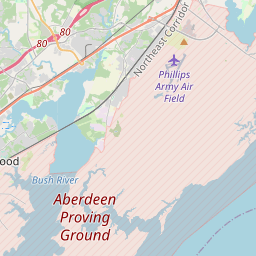Inscription
The American Indians of the Sassafras region - known as the Tockwogh - survived by harvesting the rich bounty of plants and animals of the Chesapeake. They netted rockfish and other finfish, gathered shellfish and crabs during low tides, hunted deer and small game, and gathered wild nuts during the fall. The Tockwogh were also avid farmers, growing corn, squash and other crops.
The Tockwogh built their village within a palisade, a tall stockade wall constructed of sturdy branches. The village consisted of longhouse homes, storehouses, gathering places and garden plots.
The Tockwogh traveled by water in dugout canoes crafted from the trunks of large trees. The craftsmen built each canoe by burning a tree trunk's surface and scraping away the charred wood using oyster shells. They repeated the process until the trunk was hollowed out and the bottom was flattened (to help stabilized the canoe).
Tockwogh men were responsible for hunting, fishing and defending the tribe. The women were tasked with tending gardens, weaving baskets, making clothing and raising the children.
The Tockwogh built their village within a palisade, a tall stockade wall constructed of sturdy branches. The village consisted of longhouse homes, storehouses, gathering places and garden plots.
The Tockwogh traveled by water in dugout canoes crafted from the trunks of large trees. The craftsmen built each canoe by burning a tree trunk's surface and scraping away the charred wood using oyster shells. They repeated the process until the trunk was hollowed out and the bottom was flattened (to help stabilized the canoe).
Tockwogh men were responsible for hunting, fishing and defending the tribe. The women were tasked with tending gardens, weaving baskets, making clothing and raising the children.
Details
| HM Number | HM17PQ |
|---|---|
| Tags | |
| Placed By | Chesapeake Bay Gateways Network |
| Marker Condition | No reports yet |
| Date Added | Friday, September 12th, 2014 at 1:32pm PDT -07:00 |
Pictures
Locationbig map












| UTM (WGS84 Datum) | 18S E 415152 N 4356573 |
|---|---|
| Decimal Degrees | 39.35445000, -75.98478333 |
| Degrees and Decimal Minutes | N 39° 21.267', W 75° 59.087' |
| Degrees, Minutes and Seconds | 39° 21' 16.02" N, 75° 59' 5.22" W |
| Driving Directions | Google Maps |
| Area Code(s) | 410 |
| Closest Postal Address | At or near 13761 Turners Creek Rd, Kennedyville MD 21645, US |
| Alternative Maps | Google Maps, MapQuest, Bing Maps, Yahoo Maps, MSR Maps, OpenCycleMap, MyTopo Maps, OpenStreetMap |
Is this marker missing? Are the coordinates wrong? Do you have additional information that you would like to share with us? If so, check in.
Nearby Markersshow on map
Show me all markers in: Kennedyville, MD | Kent County | 21645 | Maryland | United States of America
Maintenance Issues
- Is this marker part of a series?
- What historical period does the marker represent?
- What historical place does the marker represent?
- What type of marker is it?
- What class is the marker?
- What style is the marker?
- Does the marker have a number?
- What year was the marker erected?
- This marker needs at least one picture.
- Can this marker be seen from the road?
- Is the marker in the median?

Comments 0 comments